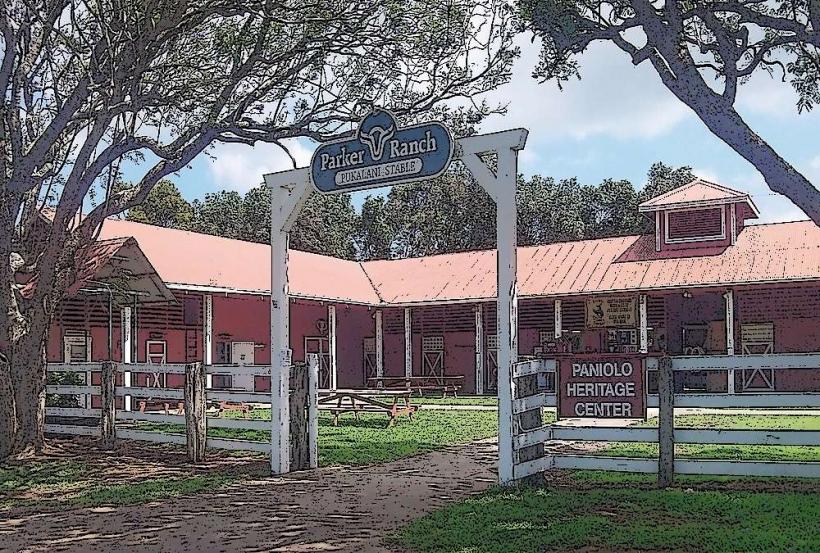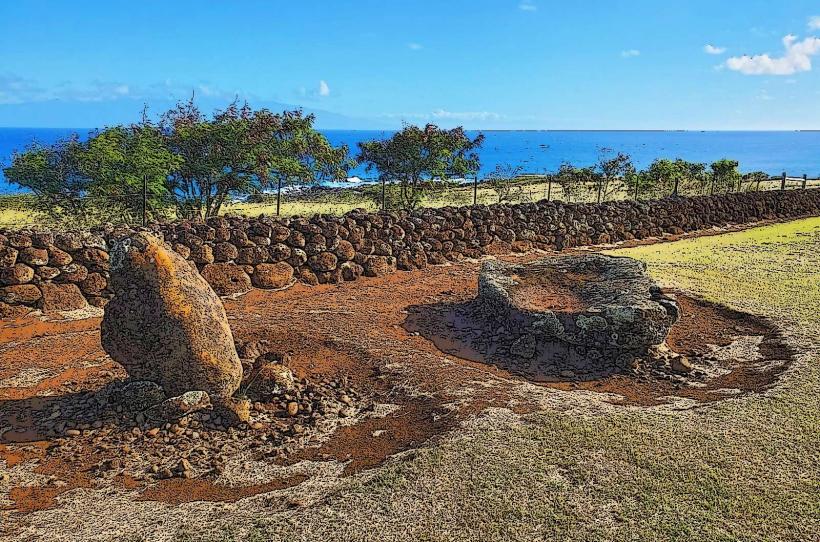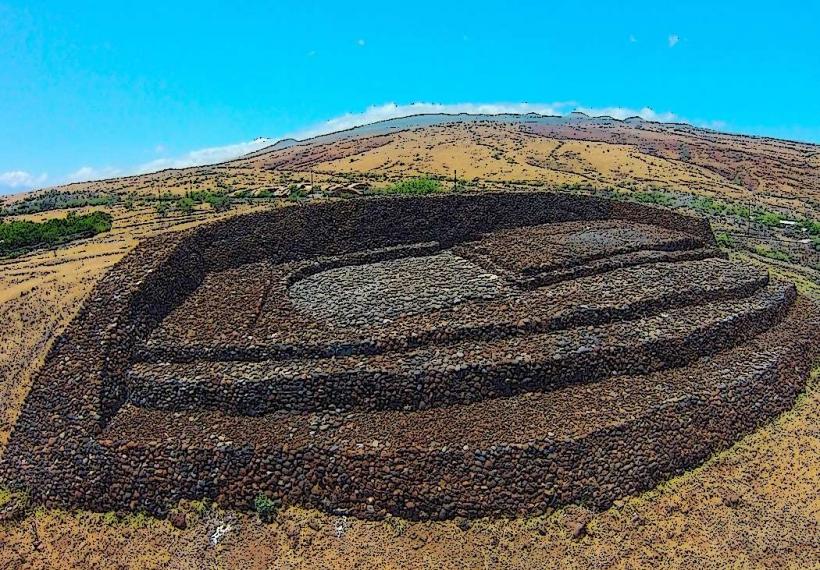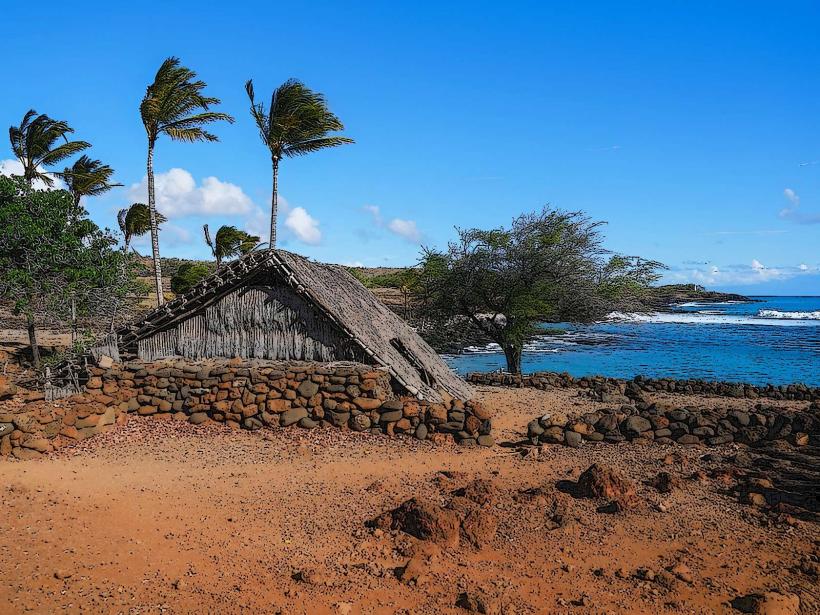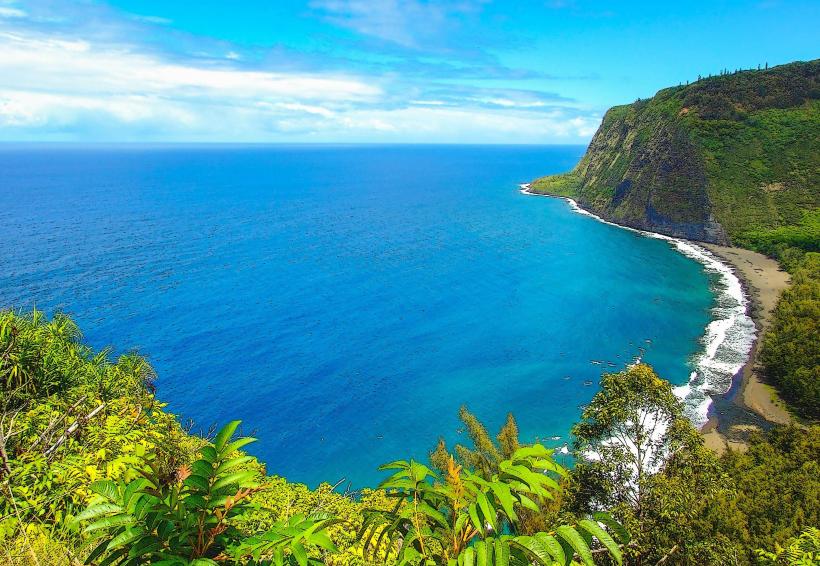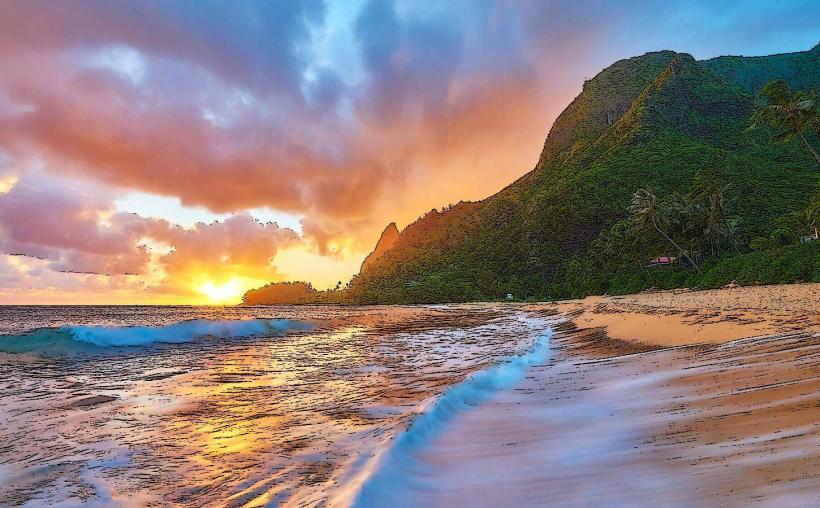Information
Landmark: Ka Lae (South Point)City: Waimea
Country: USA Hawaii
Continent: North America
Ka Lae (South Point) is the southernmost point of the Big Island of Hawaii and the United States. Located in the Ka'u District of the island, this rugged and remote area holds significant historical, cultural, and geographical importance. Ka Lae, also known as South Point, is a dramatic location, offering sweeping views of the Pacific Ocean and unique insights into Hawaii's early history.
Geographical and Natural Significance
Southernmost Point:
- Ka Lae is the southernmost point of both the Big Island and the entire United States, making it a landmark location. It is often considered a geographic feature of interest for those who appreciate remote natural sites.
- The point is located along a rugged coastline, with steep cliffs dropping dramatically into the ocean below. The area is known for its strong winds, rough seas, and spectacular vistas.
Natural Features:
- The area around South Point features a unique coastal landscape, characterized by green rolling hills, lava plains, and rocky cliffs. Visitors can witness the stunning contrasts between the green vegetation and the stark, volcanic terrain.
- Ka Lae is surrounded by grasslands and lava fields, and the area is often windy, providing excellent conditions for kite surfing and wind surfing.
The Ka Lae Wind Farm:
- The area around Ka Lae is also home to a wind farm. This wind farm is one of the largest on the island and takes advantage of the consistent trade winds that blow through the region. The wind turbines are an important part of Hawaii's efforts to harness renewable energy.
Historical and Cultural Significance
Ancient Hawaiian Significance:
- Ka Lae is home to several important archaeological sites and ancient Hawaiian structures. The area was once inhabited and used by ancient Hawaiians for various purposes, including agriculture, fishing, and navigation.
- Makaiwa Point, near South Point, was a significant location for early Hawaiian fishing villages. The remains of fishing shrines and tools can still be found in the area.
First Polynesian Arrival:
- According to some traditions, Ka Lae is believed to be one of the possible landing sites for the first Polynesian navigators to arrive in Hawaii. Early Polynesians traveled vast distances across the Pacific Ocean, and South Point is a key location associated with Hawaiian voyaging and settlement history.
Captain Cook’s Voyages:
- The area also played a role in the exploration of Hawaii by Westerners. During the voyages of Captain James Cook in the late 18th century, South Point served as a key reference point for sailors navigating the waters around the Hawaiian Islands.
The "Green Sand" Beach:
- Ka Lae is home to Papakolea Beach, also known as Green Sand Beach, named for its unique green sand. The sand's distinct color comes from the mineral olivine, which is found in the surrounding volcanic rocks.
- The beach is one of only four green sand beaches in the world and is a popular but remote destination for visitors. The beach is accessible via a long hike or off-road vehicle tours, and it offers an opportunity to witness one of Hawaii's most unique natural wonders.
Cultural Sites:
- In addition to the ancient fishing village remains, the area contains other significant cultural sites, including petroglyphs and heiau (temples). These sites provide insights into early Hawaiian religious and cultural practices.
Things to See and Do
Visit Papakolea Beach (Green Sand Beach):
- Papakolea Beach, located near Ka Lae, is one of the island’s most famous attractions. The green sand and the stunning coastal setting make it a must-visit spot for those who can make the journey. It’s an arduous hike to the beach, but the rare sand and dramatic scenery make it worth the effort.
- While at the beach, visitors can swim in the clear waters or relax and take in the beautiful, isolated environment.
Hike to the Southernmost Point:
- The area offers visitors the chance to visit the southernmost point in the United States. The cliffs at South Point are dramatic and provide breathtaking views of the Pacific Ocean. The area is relatively remote, so visitors can enjoy the natural surroundings in relative solitude.
Wind Surfing and Kite Surfing:
- Ka Lae is one of the windiest areas on the island, making it an ideal location for wind surfing and kite surfing. For those interested in these water sports, the strong trade winds create excellent conditions.
Explore the Archaeological Sites:
- Ka Lae is a rich archaeological area, with several petroglyphs, heiau, and other ancient Hawaiian structures. These offer a glimpse into the lives of the early Hawaiians and their use of the landscape. Some of the petroglyphs can be found near the shoreline, while other historical sites are spread across the region.
Fishing:
- South Point is a historically important fishing location. Visitors who are interested in fishing can enjoy some of the island's best shore fishing here, with abundant marine life and the opportunity to fish along the rugged coastline.
Practical Information
Location:
- Ka Lae (South Point) is located at the southern tip of the Big Island of Hawaii, about 17 miles south of Naalehu. It is accessible via Highway 11, and visitors need to head south from Naalehu and follow the road to the parking area near the point.
Access and Transportation:
- The area is somewhat remote, and a 4WD vehicle is recommended if you plan to explore the rougher areas or visit Papakolea Beach. Visitors without 4WD vehicles can hike to the beach or use guided tours to access the area.
- Guided tours are available for those who want to learn more about the history and geology of the area, as well as for those interested in visiting the Green Sand Beach.
Best Time to Visit:
- The best time to visit is in the morning or late afternoon to avoid the hottest part of the day and to enjoy the cooler weather and the most stunning light for photography. Due to the remote nature of the area, it is advisable to check the weather conditions before visiting, as winds and rough seas can be challenging during certain times of the year.
Facilities:
- There are no major facilities or amenities at South Point. It is a remote location, so visitors should bring essentials such as water, snacks, sun protection, and comfortable walking shoes. There are no restrooms, so plan accordingly.
- Camping is not allowed in the immediate area, but there are some nearby campgrounds in Naalehu for those who want to stay overnight.
Safety:
- The area is rugged, and the waters can be dangerous with strong waves and currents. Always exercise caution when venturing near the cliffs or swimming in the ocean.
Why Visit Ka Lae (South Point)?
Unique Geography: As the southernmost point in the United States, Ka Lae offers an opportunity to visit a remarkable geographic location.
Natural Beauty: The stark beauty of the rugged coastline, cliffs, and green sand beach make the area visually stunning and perfect for nature lovers and photographers.
Cultural and Historical Significance: The area holds deep cultural and historical significance, particularly in the context of ancient Hawaiian settlement and voyaging traditions.
Outdoor Activities: The location offers a variety of outdoor activities, including hiking, fishing, kite surfing, and exploring ancient sites.
Visiting Ka Lae (South Point) is a chance to experience a remote, scenic, and historically significant part of the Big Island. Whether you're interested in nature, culture, or adventure, South Point offers something special for every traveler.

